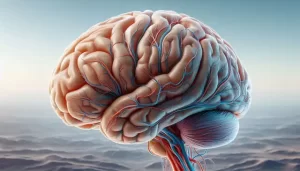COVID-19 may exhibit antigenic drift with possible fatality rate of 35%?
- A Persistent Crisis: The Looming Specter of Drug Shortages in United States
- Rabies: The fatality rate nearly 100% once symptoms appear
- Human Brain Continues to Grow: Study Shows Increase in Size and Complexity
- CRISPR Genome Editing: From Molecular Principles to Therapeutic Applications
- Metformin Helps Immune System Better Recognize Cancer Cells
- Highlights of Prostate Cancer Research at the 2024 EAU Congress
COVID-19 may exhibit antigenic drift with possible fatality rate of 35%?
COVID-19 may exhibit antigenic drift with possible fatality rate of 35%? In early August, a message about the British government’s emergency advisory group claiming that “the COVID-19 virus may have antigenic drift in the future, with a fatality rate of as high as 35%” was circulated on the Internet on a large scale.
This news not only suggested an astonishing fatality rate of 35%, but also lit up an unfamiliar vocabulary-“antigenic drift”.
But no matter which version of the newsletter, it seems that it fails to clarify the matter. What did the British emergency advisory group say? Why do you say that? Fortunately, they released the full text of the report. Regarding the 35% and antigenic drift, just look at the original text.
4 cases with different possibilities
When this report was released, the number of people infected worldwide was about 175 million. Today, it has exceeded 200 million. Compared with the state when the report was released, the COVID-19 epidemic may have changed. For example, the report was created in the United Kingdom. At that time, this key report of the US CDC has not yet been released. (For details, see the related article: Is the vaccine still effective against the Delta strain? The US CDC discloses key information)
The starting point of the report itself is to predict possible changes in the epidemic, assess the possibility of changes, and propose solutions to these changes. The report predicts a total of 4 situations, almost all of which are analyzed based on the situation of the COVID-19 mutation. The 4 situations are:
1. The emergence of mutant strains that can greatly increase the lethality, such as increasing the lethality to the height of SARS (10%) or MERS (35%). This possibility is evaluated as: high, feasible in reality.
2. A mutant strain that completely escapes the existing vaccine appears. This possibility is evaluated as: almost certain.
3. The emergence of mutant strains resistant to antiviral drugs. This possibility is evaluated as: general, feasible in reality. It is not evaluated as a high possibility because it has not yet begun to use antiviral drugs on a large scale against COVID-19.
4. The virus becomes weaker and the viral load drops after infection. This possibility is evaluated as: impossible in the short term, but possible in the long term.
Generally speaking, this prediction is more pessimistic. It is not believed that the virus will weaken in the short term. On the contrary, due to the current epidemic prevention methods, the virus is more likely to become more immune to escape, more lethal, and even strengthen in humans. After antiviral drug treatment, drug resistance mutations occur.
What does antigenic drift mean?
The core idea of the entire report revolves around virus mutation. Among them, “antigenic drift” is a vocabulary that has been highlighted by the domestic media. What does this mean?
In fact, in the report, two concepts are proposed, one is antigen drift and the other is antigen shift. Both of these are antigen (herein referred to as the new coronavirus) mutation.
The definition of antigen shift in the report is that the new coronavirus is inserted into the spike gene sequence from other coronaviruses. According to the analysis of the report, the more likely source is the coronavirus, which has a higher prevalence in the population, and the possibility of insertion from a dangerous virus such as MERS is lower because the latter has a lower prevalence.
The report believes that another longer-term antigen shift possibility is that humans infect the virus to animals, the virus mutates in animals, and the mutated virus is transmitted back to humans.
A recent study suggested that a large number of positive samples of new coronavirus antibodies have been found in common white-tailed deer herds in the United States. What kind of threat this situation will bring to the human epidemic is not yet clear.

Nature’s report on the discovery of COVID-19 antibody positive in U.S. white-tailed deer herd
The above two possibilities of change are considered to be possible in reality. If the transferred spike gene sequence is brand new, it will have a high impact on humans. If the inserted spike gene sequence is highly popular in humans, many people may already have immunity to it, and the impact may be small. .
Antigen shift (antigen shift), the report pointed out that this gradual or intermittent accumulation of antigenic variation will eventually make existing vaccines ineffective.
In a broad definition, the change of antigen drift is smaller than that of antigen shift. In the context of influenza, the latter is likely to cause a pandemic while the former has less influence. But in this report, the possible impact of antigen drift is no less than that of antigen shift.
In this link, the researchers put forward a worst possibility, that is, antigen drift may cause significant antigenic sin (antigenic sin), making it difficult for humans to re-vaccinate to produce effective antibodies.
What is the original sin?
Antigenic sin means that after a previous virus infection or vaccination has triggered antibodies, the body cannot produce targeted antibodies against new antigens—that is, new viruses that have been mutated, but only Will produce the previous antibody. If the previous antibodies are already ineffective against the new mutant virus, then there will be such a situation-on the one hand, the mutant virus does whatever it wants in the human body because it has no targeted antibodies, on the other hand, the body continues to produce useless antibodies to try to fight the virus. What’s worse is that once this happens, the new vaccine will also not allow the body to produce new antibodies.
The issue of antigenic crime has been raised by two Swiss scholars last year. In this viewpoint, they proposed that the phenomenon of antigenic crime may lead to ADE. This paper also puts forward the hypothesis that children do not have pre-existing immunity and therefore have milder symptoms. Not long ago, the study of T cell immunity between children and adult patients by the University of Hong Kong supported the views of these two Swiss scholars on pre-existing immunity. (For details, please refer to the related article: Children have milder symptoms after being infected with COVID-19. The University of Hong Kong reveals the specific reasons)

Opinion articles on antigenic crime
This British report assessed that the antigenic drift and genetic mutation of the new coronavirus is unstoppable. Because there has not been any report of the novel coronavirus with antigenic crime, the advisory group believes that the possibility of antigenic crime is low.
How did the 35% fatality rate come about?
High lethality itself is a direction of mutation. 35% is just an example of MERS in the report. In reality, it is entirely possible that fatal mutations higher or lower than 35% may occur. But in general, a direction that is more likely to kill people is a direction that the report believes is more likely.
This mutation is somewhat different from the above-mentioned mutations that increase the transmission ability or immune escape ability. Antigen drift or antigen shift mainly occurs on the spike protein, that is, the green one in the figure below exists on the surface of the virus. These protruding parts, and lethal mutations are more likely to occur inside the virus, such as in the polymerase protein or accessory protein.

Coronavirus model, picture source Nature
These genes inside the virus determine the speed of virus replication, the speed at which the virus is detected by the cell, and even affect the cell’s resistance to the virus (for details, see the related article: Nature: Why is the Delta mutant so dangerous?).
This mutation may come from the host, or it may come from a different kind of virus. And there is a precedent in the coronavirus.
Another possibility that leads to higher lethality is the combination of mutant strains. For example, one of them has a high degree of immune escape ability, while the other has high lethality and can replicate rapidly in cells. The mutant strains combine with each other to form a new mutation with the characteristics of both sides, which is immune to escape and can be highly lethal.
The report believes that the possibility of the first type of virus internal genetic mutation is very high, because the new coronavirus is still in a highly prevalent state, and the first type of mutation can be achieved in the host. The possibility of the second associative mutation has a greater relationship with whether the mutant strains converge.
What to do next?
In fact, the above problems, even the possible drug resistance of the virus, can be solved by “clearing”.
However, the British government does not intend to do so, so the main plan they give is:
- Reduce the spread of the virus in the UK and the number of infections, because the more people infected, the more widespread the spread, the more likely new mutations will occur;
- Develop vaccines that can prevent infection as soon as possible, because the current vaccines mainly prevent severe illness and death, and do not prevent infection. As a result, the more people who are infected after the vaccine, the more likely it is to create a mutation for the vaccine;
- Try to prevent mutations from other regions from reaching the United Kingdom as much as possible to prevent the exchange and combination of various mutations in the United Kingdom to create new terrible mutations;
- Keep and manufacture vaccine production lines that can keep up with mutations faster, vaccinate the population regularly, expedite the injection of vaccines to the population, and repeatedly vaccinate the population;
- Stock up on antiviral drugs and develop new drugs;
- Increase the monitoring of virus mutation dynamics, parallel laboratory monitoring and clinical monitoring, and invest in better monitoring systems;
- Considering that animals will be infected by humans and may be transmitted back to humans, animals should be quarantined, vaccinated or culled at appropriate times.
(source:internet, reference only)
Disclaimer of medicaltrend.org
Important Note: The information provided is for informational purposes only and should not be considered as medical advice.



